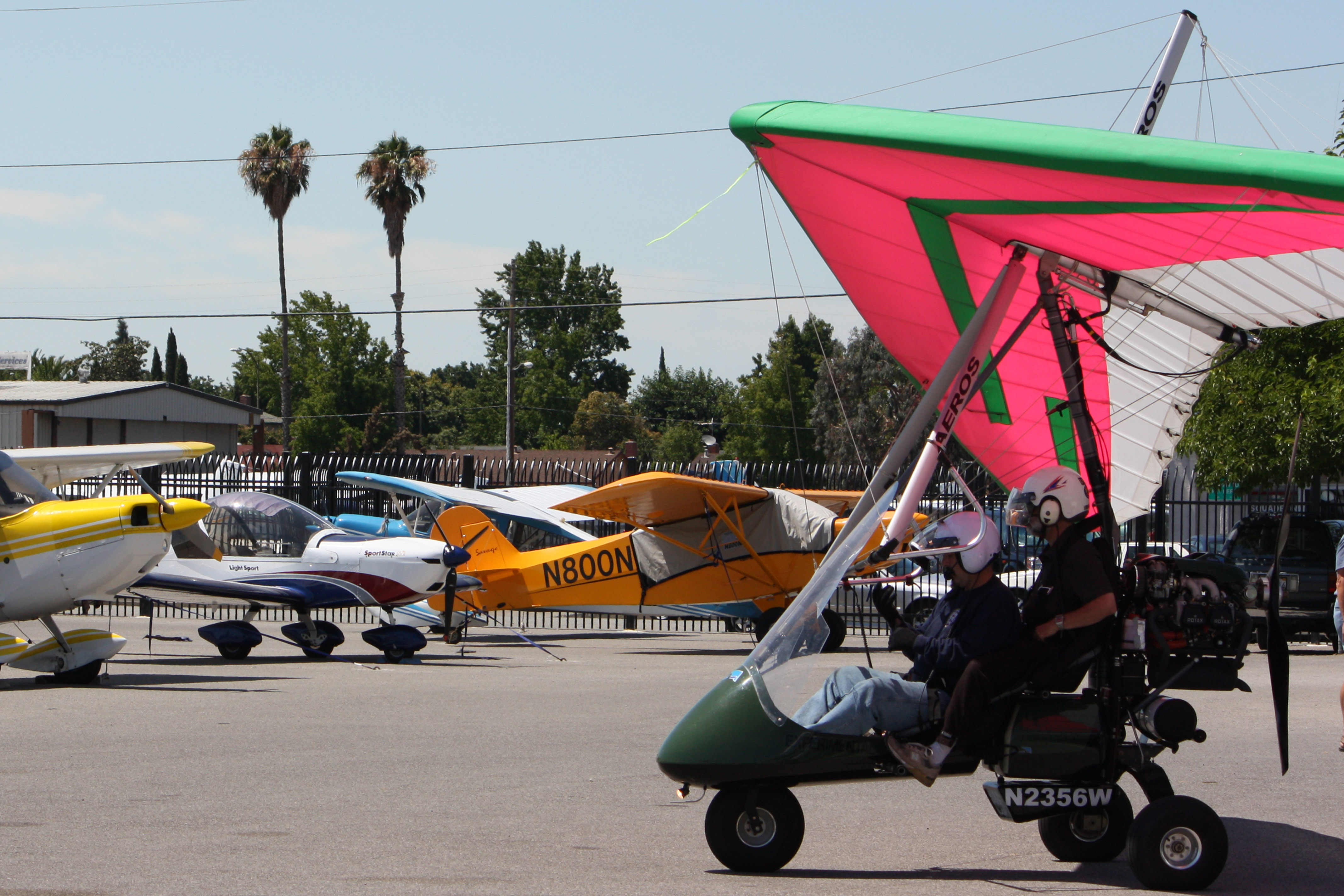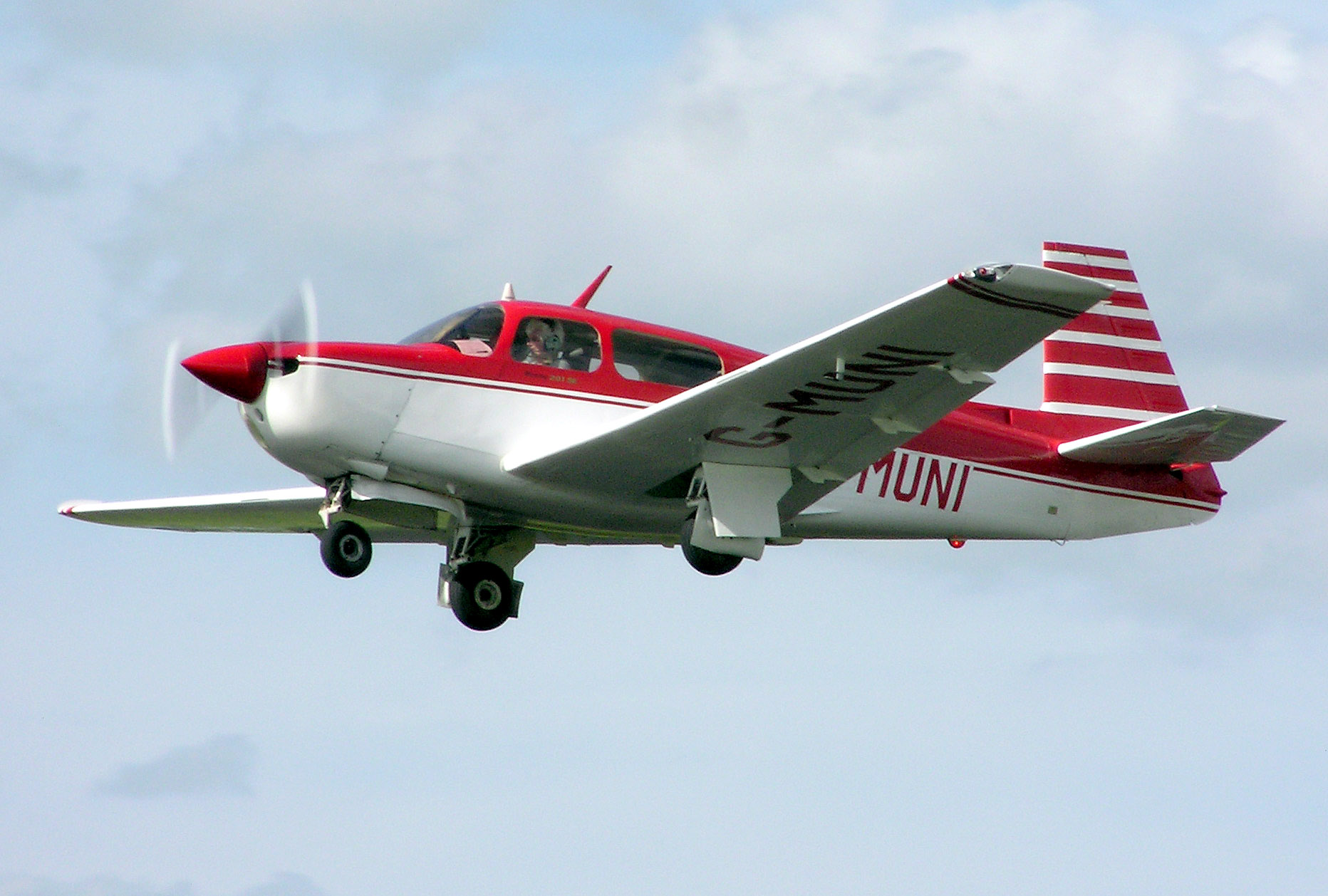|
Sport Performance Aviation Panther
The Sport Performance Aviation Panther is a single seat, all-metal, homebuilt aircraft under development by Sport Performance Aviation of Green Cove Springs, Florida. The aircraft is intended to be supplied as plans and as a kit for amateur construction.Tacke, Willi; Marino Boric; et al: ''World Directory of Light Aviation 2015-16'', page 127. Flying Pages Europe SARL, 2015. Design The Panther is a single seat, low wing aircraft, built of aluminum with a bubble canopy. The forward fuselage is constructed from welded 4130 steel tubing, with the aft fuselage, tail and wings made from 2024-T3 aluminum sheet. The landing gear can be assembled in either tricycle or conventional gear arrangements. The wings are designed to be folded for storage or ground transport. The design can accept engines from . Variants Two variants are available, a Light Sport and a standard category. ;Panther Sport : wing span, Engines from 100-160hp with a gross weight, of fuel. ;Panther LSA : wing ... [...More Info...] [...Related Items...] OR: [Wikipedia] [Google] [Baidu] |
WikiProject Aircraft
A WikiProject, or Wikiproject, is an affinity group for contributors with shared goals within the Wikimedia movement. WikiProjects are prevalent within the largest wiki, Wikipedia, and exist to varying degrees within Wikimedia project, sibling projects such as Wiktionary, Wikiquote, Wikidata, and Wikisource. They also exist in different languages, and translation of articles is a form of their collaboration. During the COVID-19 pandemic, CBS News noted the role of Wikipedia's WikiProject Medicine in maintaining the accuracy of articles related to the disease. Another WikiProject that has drawn attention is WikiProject Women Scientists, which was profiled by ''Smithsonian Magazine, Smithsonian'' for its efforts to improve coverage of women scientists which the profile noted had "helped increase the number of female scientists on Wikipedia from around 1,600 to over 5,000". On Wikipedia Some Wikipedia WikiProjects are substantial enough to engage in cooperative activities with outsi ... [...More Info...] [...Related Items...] OR: [Wikipedia] [Google] [Baidu] |
4130 Steel
41xx steel is a family of SAE steel grades, as specified by the Society of Automotive Engineers (SAE). Alloying elements include chromium and molybdenum, and as a result these materials are often informally referred to as chromoly steel (common variant stylings include ''chrome-moly'', ''cro-moly'', ''CrMo'', ''CRMO'', ''CR-MOLY'', and similar). They have an excellent strength to weight ratio and are considerably stronger and harder than standard 1020 steel, but are not easily welded, requiring thermal treatment both before and after welding to avoid cold cracking. While these grades of steel do contain chromium, it is not in great enough quantities to provide the corrosion resistance found in stainless steel. Examples of applications for 4130, 4140, and 4145 include structural tubing, bicycle frames, gas bottles for transportation of pressurized gases, firearm parts, clutch and flywheel components, and roll cages. 4150 stands out as being one of the steels accepted for use ... [...More Info...] [...Related Items...] OR: [Wikipedia] [Google] [Baidu] |
Sonex Aircraft Sonex
The Onex, Sonex, Waiex and Xenos are a family of lightweight, metal, low-wing, two seat homebuilt aircraft. Kits are produced and marketed by Sonex Aircraft, a small manufacturer based in Oshkosh, Wisconsin. By 2014, 500 customer built aircraft had been completed. The Sonex can also be built from plans.Vandermeullen, Richard: ''2011 Kit Aircraft Buyer's Guide'', Kitplanes, Volume 28, Number 12, December 2011, page 70. Belvoir Publications. ISSN 0891-1851Downey, Julia: ''2008 Kit Aircraft Directory'', Kitplanes, Volume 24, Number 12, December 2007, page 72. Primedia Publications. ISSN 0891-1851Bayerl, Robby; Martin Berkemeier; et al: ''World Directory of Leisure Aviation 2011-12'', pages 119-120. WDLA UK, Lancaster UK, 2011. ISSN 1368-485X Company founder John Monnett (engineer), John Monnett was approached by an Italian business looking for an aircraft that would meet their Ultralight aviation, Microlight category. A variation of Monnett Sonerai, Sonerai was initially propos ... [...More Info...] [...Related Items...] OR: [Wikipedia] [Google] [Baidu] |
Horizontally Opposed
A flat engine is a piston engine where the cylinders are located on either side of a central crankshaft. Flat engines are also known as horizontally opposed engines, however this is distinct from the less common opposed-piston engine design, whereby each cylinder has two pistons sharing a central combustion chamber. The most common configuration of flat engines is the boxer engine configuration, in which the pistons of each opposed pair of cylinders move inwards and outwards at the same time. The other configuration is effectively a V engine with a 180-degree angle between the cylinder banks: in this configuration each pair of cylinders shares a single crankpin, so that as one piston moves inward, the other moves outward. The first flat engine (Benz Contramotor) was built in 1897 by Karl Benz. Flat engines have been used in aviation, motorcycle and automobile applications. They are now less common in cars than straight engines (for engines with fewer than six cylinders) and ... [...More Info...] [...Related Items...] OR: [Wikipedia] [Google] [Baidu] |
Chevrolet Turbo-Air 6 Engine
The Chevrolet Turbo-Air 6 is a flat-six air-cooled automobile engine developed by General Motors (GM) in the late 1950s for use in the rear-engined Chevrolet Corvair of the 1960s. It was used in the entire Corvair line, as well as a wide variety of other applications. The engine's use of air cooling made it appealing to aircraft amateur builders, and small-volume engine builders established a cottage industry modifying Corvair engines for aircraft. History Ed Cole, Chief Engineer for Chevrolet from 1952 to 1956 and Chevrolet General Manager from 1956 to 1961, was the person primarily responsible for getting the Corvair and its engine into production. Cole's experience with rear-engined vehicles began during his time as chief design engineer of light tanks and combat vehicles for Cadillac during World War II. He designed powertrains for the M24 Chaffee light tank and M5 Stuart tank, the latter of which used two rear-mounted Cadillac V8 engines driving through Hydramatic transmis ... [...More Info...] [...Related Items...] OR: [Wikipedia] [Google] [Baidu] |
Light-sport Aircraft
A light-sport aircraft (LSA), or light sport aircraft, is a category of small, lightweight aircraft that are simple to fly. LSAs tend to be heavier and more sophisticated than ultralight (aka "microlight") aircraft, but LSA restrictions on weight and performance separates the category from established general aviation, GA aircraft. There is no standard worldwide description of an LSA. LSAs in different countries The Civil aviation authority, civil aviation authorities in different countries have their own particular specifications and regulations which define the LSA category. For example, in Australia the Civil Aviation Safety Authority defines a light-sport aircraft as a heavier-than-air or lighter-than-air craft, other than a helicopter, with a maximum gross takeoff weight of not more than for lighter-than-air craft; for heavier-than-air craft not intended for operation on water; or for aircraft intended for operation on water. It must have a maximum stall (flight), stall ... [...More Info...] [...Related Items...] OR: [Wikipedia] [Google] [Baidu] |
Conventional Landing Gear
Conventional landing gear, or tailwheel-type landing gear, is an aircraft Landing gear, undercarriage consisting of two main wheels forward of the Center of gravity of an aircraft, center of gravity and a small wheel or skid to support the tail.Crane, Dale: ''Dictionary of Aeronautical Terms, third edition'', page 133. Aviation Supplies & Academics, 1997. From the Ground Up, 27th edition, page 11 The term taildragger is also used. The term "conventional" persists for historical reasons, but all modern jet aircraft and most modern propeller aircraft use tricycle gear. History In early aircraft, a tailskid made of metal or wood was used to support the tail on the ground. In most modern aircraft with conventional landing gear, a small articulated wheel assembly is attached to the rearmost part of the airframe in place of the skid. This wheel may be steered by the pilot through a connection to the rudder pedals, allowing the rudder and tailwheel to move together. Before aircraft ... [...More Info...] [...Related Items...] OR: [Wikipedia] [Google] [Baidu] |
Tricycle Gear
Tricycle gear is a type of aircraft undercarriage, or ''landing gear'', that is arranged in a tricycle fashion. The tricycle arrangement has one or more nose wheels in a single front undercarriage and two or more main wheels slightly aft of the center of gravity. Tricycle gear aircraft are the easiest for takeoff, landing and taxiing, and consequently the configuration is now the most widely used on aircraft.Crane, Dale: ''Dictionary of Aeronautical Terms, third edition'', page 524. Aviation Supplies & Academics, 1997. Aviation Publishers Co. Limited, ''From the Ground Up'', page 11 (27th revised edition) History Several early aircraft had primitive tricycle gear, notably very early Antoinette planes and the Curtiss Pushers of the pre-World War I Pioneer Era of aviation. Waldo Waterman's 1929 tailless '' Whatsit'' was one of the first to have a steerable nose wheel. In 1956, Cessna introduced sprung-steel tricycle landing gear on the Cessna 172. Their marketing depart ... [...More Info...] [...Related Items...] OR: [Wikipedia] [Google] [Baidu] |
Landing Gear
Landing gear is the undercarriage of an aircraft or spacecraft that is used for taxiing, takeoff or landing. For aircraft, it is generally needed for all three of these. It was also formerly called ''alighting gear'' by some manufacturers, such as the Glenn L. Martin Company. For aircraft, Stinton makes the terminology distinction ''undercarriage (British) = landing gear (US)''. For aircraft, the landing gear supports the craft when it is not flying, allowing it to take off, land, and taxi without damage. Wheeled landing gear is the most common, with skis or Seaplane, floats needed to operate from snow/ice/water and skids for vertical operation on land. Retractable undercarriages fold away during flight, which reduces drag (physics), drag, allowing for faster airspeeds. Landing gear must be strong enough to support the aircraft and its design affects the weight, balance and performance. It often comprises three wheels, or wheel-sets, giving a tripod effect. Some unusual land ... [...More Info...] [...Related Items...] OR: [Wikipedia] [Google] [Baidu] |
2024-T3 Aluminum
2024 aluminium alloy is an aluminium alloy, with copper as the primary alloying element. It is used in applications requiring a high strength-to-weight ratio, as well as good fatigue resistance. It is weldable only through friction welding, and has average machinability. Due to poor corrosion resistance, it is often clad with aluminium or Al-1Zn for protection, although this may reduce the fatigue strength. In older systems of terminology, 2XXX series alloys were known as duralumin, and this alloy was named 24ST. 2024 is commonly extruded, and also available in alclad sheet and plate forms. It is not commonly forged (the related 2014 aluminium alloy is, though). Basic properties Aluminium alloy 2024 has a density of 2.78 g/cm3 (0.1 lb/in3), electrical conductivity of 30% IACS, Young's modulus of 73 GPa (10.6 Msi) across all tempers, and begins to melt at . Chemical composition The alloy composition of 2024 is: [...More Info...] [...Related Items...] OR: [Wikipedia] [Google] [Baidu] |
Fuselage
The fuselage (; from the French language, French ''fuselé'' "spindle-shaped") is an aircraft's main body section. It holds Aircrew, crew, passengers, or cargo. In single-engine aircraft, it will usually contain an Aircraft engine, engine as well, although in some amphibious aircraft the single engine is mounted on a hardpoint, pylon attached to the fuselage, which in turn is used as a floating Hull (watercraft), hull. The fuselage also serves to position the Flight control surfaces, control and Stabilizer (aeronautics), stabilization surfaces in specific relationships to Wing, lifting surfaces, which is required for aircraft stability and maneuverability. Types of structures Truss structure This type of structure is still in use in many lightweight aircraft using welding, welded steel tube trusses. A box truss fuselage structure can also be built out of wood—often covered with plywood. Simple box structures may be rounded by the addition of supported lightweight strin ... [...More Info...] [...Related Items...] OR: [Wikipedia] [Google] [Baidu] |








